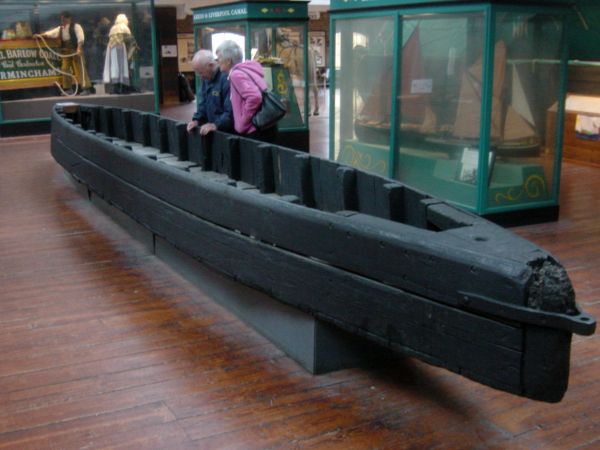I have been using the dark winter hours to look at pictures and details of canal boats, just to confirm that mine is exactly what we want don't you know. There is always the question of space on board any boat so I can see that getting a wide beam boat would be appealing. Wide beams seem to be an assortment of sizes, 9'6", 10', 12' +. This obviously limits where they can sail as they can not use the narrow canals that are maximum 7'.





Typical layout of a narrow boat.

Typical wide beam 60' x 10'6". To compare the width of the galley on the wide beam is the same width (beam) as the narrow boat, well 10'6".
This blog isn't really about the pro's and con's of narrow or wide beam boats but more why did they settle on 7 feet for the gauge in the first place.
I think that length measurement are mainly based on human sizes. Hand spans, a stride, the length of the arms outstretched etc. seven feet is close to 2 metres, 2 yards or a fathom. Was the decision about the gauge based on just as simple as that was how far a bloke could stretch across to reach both sides?
I know that the 'starvationer' boats that were built for moving coal from the underground at the Duke of Bridgewater's mines. They were around 4'6". So the canals weren't built to take two of these. They would have been small so as not to have to make the tunnels too wide.

Starvationer boat in the Ellesmere Boat Museum.
What the narrow canals lacked in length though they made up a little in length as the normal narrow lock is 70'/72' long where as the majority of broad locks are less. In the north the wide beam locks seemed to have built to accommodate the size of the local sailing barges which preceeded them, to allow them to not have to tranship from canal to estuary or seagoing barge.
Could it be more to do with the amount of cargo the boat could carry. Coal was carried in Chaldrons. In fact this was still legal until 1963! It was a measure of volume and there were loads of different measures used. It seems by the age of the canals there were mainly two the Newcastle and London Chaldron (Derived from cauldron). The Newcastle measure was standardised at 53cwt (2.7 tonnes) by the time of the canals. The London was less at 28cwt (1.4 tonnes). The limit a horse pull in a cart was one chaldron as more was thought to damage the road (not the horse you understand!). There was a standard chaldron railway wagon that was 10' x 6'3". Therefore it looks like this wasn't the reason unless they started with a different measure of a chaldron.
I'm not sure whether it is a good thing that our canals were so early and so narrow. On the continent the canals are on a much greater scale and as such are more economical to retain for commercial use. If that had happened her in the UK then there would have been big powered barges dashing about and it wouldn't have been nearly so easy to be a leisure boater. Mind you there would then be less of an argument regarding continuous moorers and the use of visitor moorings etc.

A busy day on the Rhine.
2 comments:
Not all continental canals started wide: some canals also started quite narrow and were enlarged over time. Some were even enlarged more than once. In Belgium e.g. most were dug for 300 or even 600 tonnes (in the 1750s that was really over-enthousiastic), then enlarged to 600, 1250 and up.
The issue about mooring spaces is always the same: I live close to a less-and-less used 600 tonnes canal and mooring is only allowed on a limited number of places, where most space is allocated to the local "association" and all of these places are filled, often with boats waiting for their owner to ever return....
Hi There and Happy New Year Frank,
Over in Belgium they were very far sighted as they started canals in 1116 and had the first double lock in 1396. Our first canal proper was the Bridgewater in 1760 and I think the 70 x 7 foot boats would carry a maximum of about 30 tonnes. And that is really why I wondered why they settled on the 7' gauge. I suppose it would be cheaper to dig in the first place and maybe less need to buy expensive land for the route.
Mooring here is a mute topic at the moment as it seems that we have people who appear to just stay in one place all the time which is contrary to the regulations unless you have paid for a permanent mooring. We can moor anywhere, within reason, on the tow path but in lots of areas you can't get the boat to the side due to shallows and reeds etc. Still it gives the canals character and as long as occasionally I can get to a pub or a shop it isn't too bad. Happy sailings to you in 2014.
Post a Comment